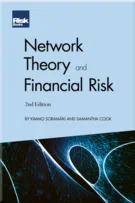Skating on Thinner Ice: A Macroeconomic Outlook at the End of the Credit Cycle
Nouriel Roubini
Foreword
Introduction
An Exploration of the Evolution of Risk: Past, Present and Future
Risk Trading, Risky Debt and Financial Stability
Skating on Thinner Ice: A Macroeconomic Outlook at the End of the Credit Cycle
Climate Change: Managing a New Financial Risk
The Quest to Save Risk-Weighted Assets
The Evolution of the CLO Market since the Global Financial Crisis and a Valuation Approach for CLO Tranches
Homo Ex Machina: Finance Rebooted
Innovation and Digitisation in Credit: A Global Perspective
The Lending Revolution: How Digital Credit Is Changing Banks from the Inside
Digital Lending in Asia: Disruption and Continuity
Digitisation and Automation in Commercial Lending: Disruption without Distraction
Credit Risk Management in the Era of Big Data: From Measurement to Insight
Artificial Intelligence and Machine Learning in Credit Risk Analytics: Present, Past and Future
Integrated Loan Portfolio Modelling and Risk Management
The Role of Banks in Illiquid Credit Markets, and the Disruption and Evolution of Credit Portfolio Management
Epilogue
Over a decade on from the global financial crisis (GFC), debates were still under way about its causes and consequences, and whether the lessons needed to prepare for the next one have been learned. Looking ahead, the more relevant question is what could actually trigger the next financial crisis and global recession, and when.
This chapter provides a macroeconomic outlook for the global economy in 2019–20 and describes the forces that may trigger the next downturn. Several of those forces are related to the post-GFC trends and disruptions in credit markets, such as the growth in leveraged lending in the US or the rise of fixed-income funds. In the first part of this chapter we consider 10 shocks and tail risks that could stall global growth and lead to a recession in 2020 or 2021.
With the large stock of debt built up in various pockets of the global economy and a rise in default rates becoming possible, we may be approaching the end of the credit cycle. In the second part of this chapter, we therefore consider how various segments of the credit markets could effect – and be affected by – the next recession.
THE JOURNEY TO THE NEXT RECESSION AND FINANCIAL CRISIS
Althou
Copyright Infopro Digital Limited. All rights reserved.
As outlined in our terms and conditions, https://www.infopro-digital.com/terms-and-conditions/subscriptions/ (point 2.4), printing is limited to a single copy.
If you would like to purchase additional rights please email info@risk.net
Copyright Infopro Digital Limited. All rights reserved.
You may share this content using our article tools. As outlined in our terms and conditions, https://www.infopro-digital.com/terms-and-conditions/subscriptions/ (clause 2.4), an Authorised User may only make one copy of the materials for their own personal use. You must also comply with the restrictions in clause 2.5.
If you would like to purchase additional rights please email info@risk.net









